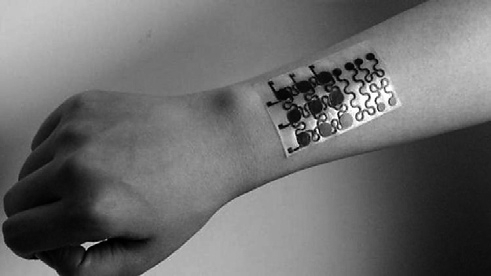
RESEARCHERS at the University of Colorado Boulder are developing a wearable electronic device that’s “really wearable”—a stretchy and fully-recyclable circuit board that’s inspired by, and sticks onto, human skin. The team, led by Xiao Jianliang and Zhang Wei, describes its new “electronic skin” in a paper published in the journal Science Advances. The device can heal itself, much like real skin. It also reliably performs a range of sensory tasks, from measuring the body temperature of users to tracking their daily step counts. And it’s reconfigurable, meaning that the device can be shaped to fit anywhere on your body. “If you want to wear this like a watch, you can put it around your wrist,” said Xiao, an associate professor in the Paul M. Rady Department of Mechanical Engineering. “If you want to wear this like a necklace, you can put it on your neck.” The group said that, one day, such high-tech skin could allow people to collect accurate data about their bodies — all while cutting down on the world’s surging quantities of electronic waste. “Smart watches are always a big chunk of metal on a band,” said Zhang, a professor in the Department of Chemistry. “If we want a truly wearable device, ideally it will be a thin film that can comfortably fit onto your body.” Those thin, comfortable films have long been a staple of science fiction. “Our research is kind of going in that direction, but we still have a long way to go,” Zhang said. His team’s goals, however, are both robot and human. The researchers previously described their design for electronic skin in 2018. But their latest version of the technology makes a lot of improvements on the concept — for a start, it’s far more elastic, not to mention functional. To manufacture their bouncy product, Xiao and his colleagues use screen printing to create a network of liquid metal wires. They then sandwich those circuits in between two thin films made out of a highly flexible and self-healing material called polyimine. The resulting device is a little thicker than a Band-Aid and can be applied to skin with heat. It can also stretch by 60 percent in any direction without disrupting the electronics inside, the team reports. The team’s electronic skin can do a lot of the same things that popular wearable fitness devices like Fitbits do: reliably measuring body temporary, heart rate, movement patterns and more. If you slice a patch of electronic skin, Zhang said, all you have to do is pinch the broken areas together. Within a few minutes, the bonds that hold together the polyimine material will begin to reform. Within 13 minutes, the damage will be almost entirely undetectable. (SD-Agencies) | 
